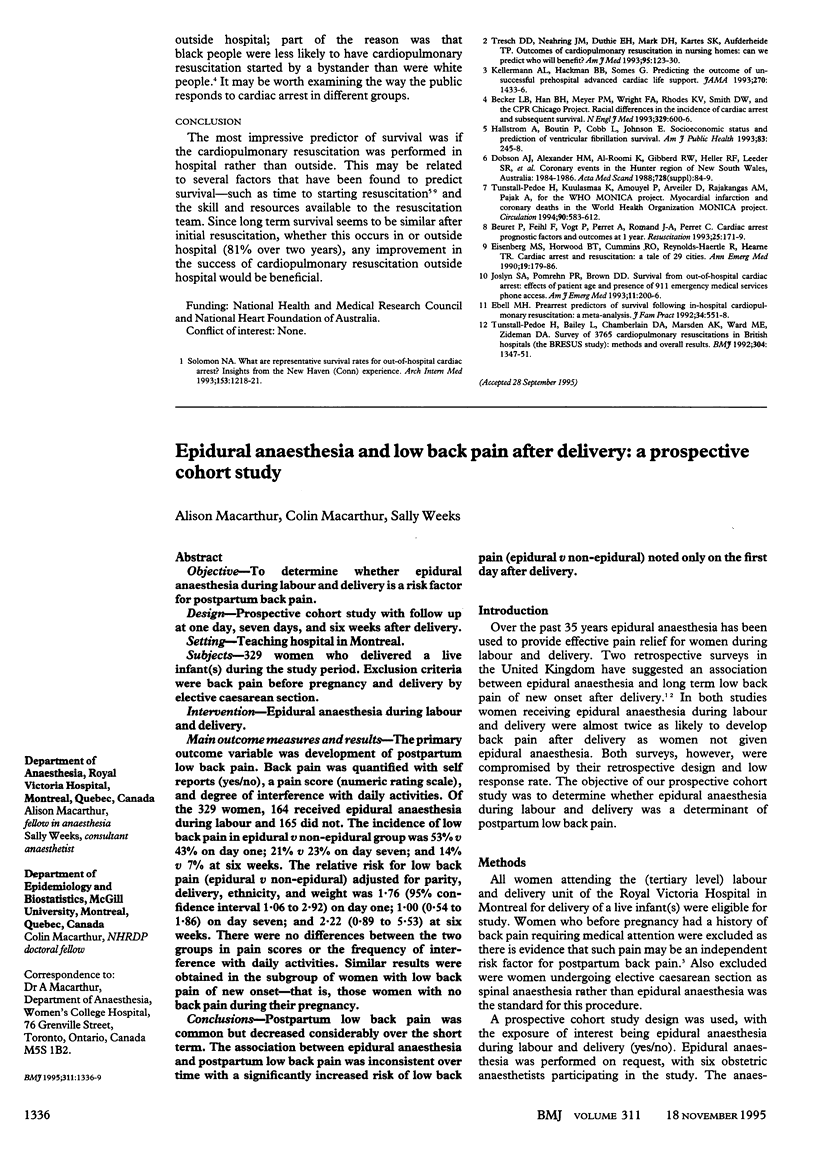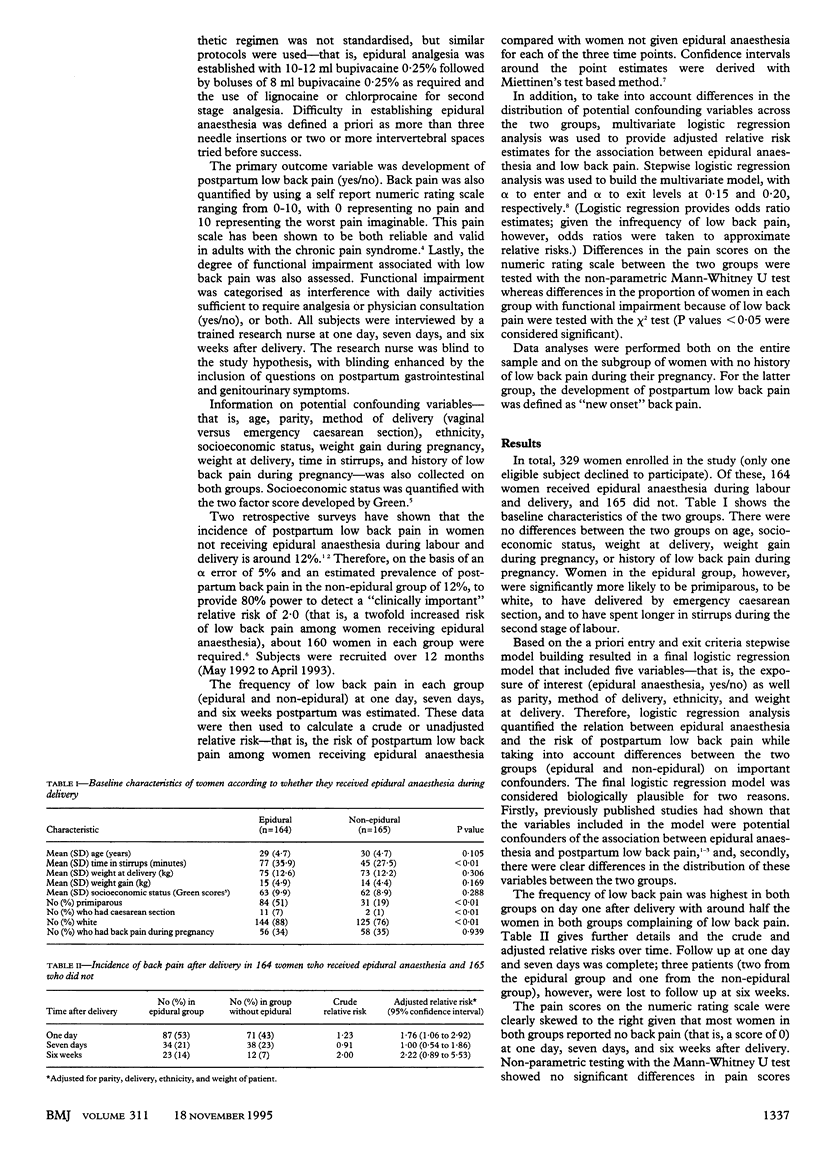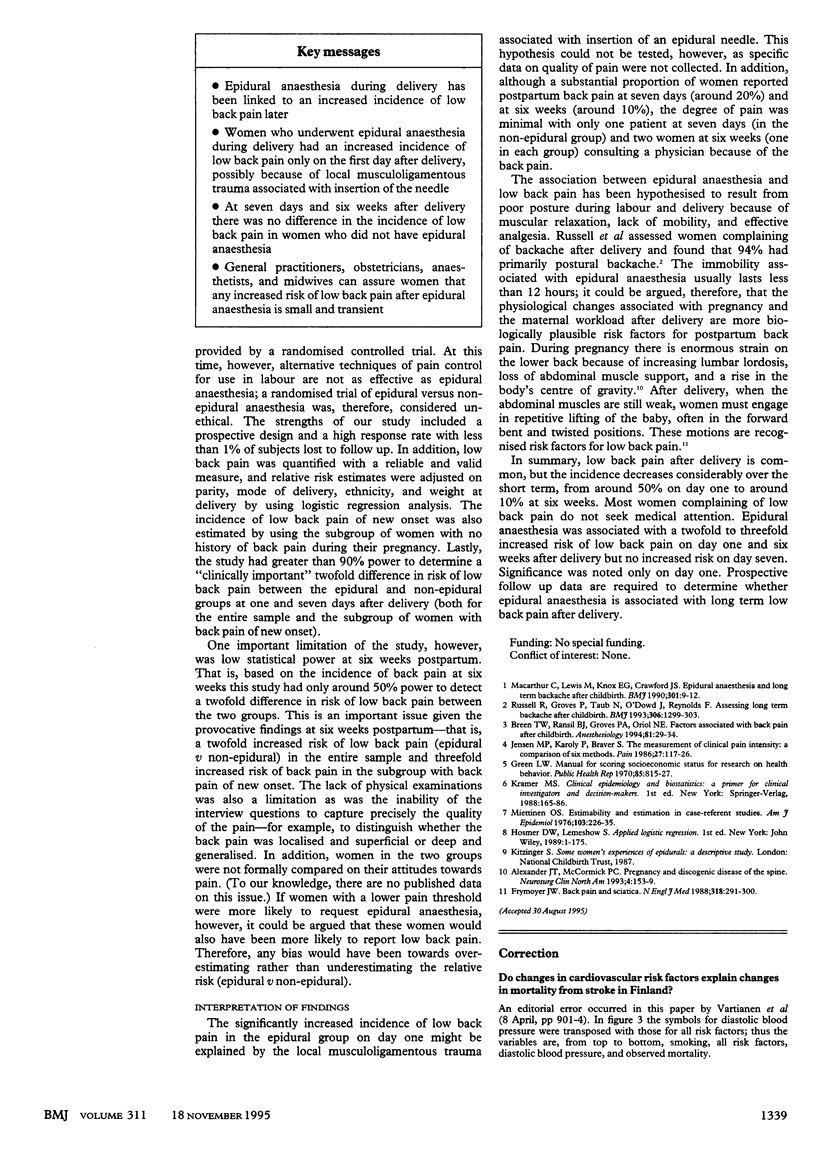Abstract
OBJECTIVE--To determine whether epidural anaesthesia during labour and delivery is a risk factor for postpartum back pain. DESIGN--Prospective cohort study with follow up at one day, seven days, and six weeks after delivery. SETTING--Teaching hospital in Montreal. SUBJECTS--329 women who delivered a live infant(s) during the study period. Exclusion criteria were back pain before pregnancy and delivery by elective caesarean section. INTERVENTION--Epidural anaesthesia during labour and delivery. MAIN OUTCOME MEASURES AND RESULTS--The primary outcome variable was development of postpartum low back pain. Back pain was quantified with self reports (yes/no), a pain score (numeric rating scale), and degree of interference with daily activities. Of the 329 women, 164 received epidural anaesthesia during labour and 165 did not. The incidence of low back pain in epidural v non-epidural group was 53% v 43% on day one; 21% on day seven; and 14% v 7% at six weeks. The relative risk for low back pain (epidural v non-epidural) adjusted for parity, delivery, ethnicity, and weight was 1.76 (95% confidence interval 1.06 to 2.92) on day one; 1.00 (0.54 to 1.86) on day seven; and 2.22 (0.89 to 5.53) at six weeks. There were no differences between the two groups in pain scores or the frequency of interference with daily activities. Similar results were obtained in the subgroup of women with low back pain of new onset--that is, those women with no back pain during their pregnancy. CONCLUSIONS--Postpartum low back pain was common but decreased considerably over the short term. The association between epidural anaesthesia and postpartum low back pain was inconsistent over time with a significantly increased risk of low back pain (epidural v non-epidural) noted only on the first day after delivery.
Full text
PDF



Selected References
These references are in PubMed. This may not be the complete list of references from this article.
- Alexander J. T., McCormick P. C. Pregnancy and discogenic disease of the spine. Neurosurg Clin N Am. 1993 Jan;4(1):153–159. [PubMed] [Google Scholar]
- Breen T. W., Ransil B. J., Groves P. A., Oriol N. E. Factors associated with back pain after childbirth. Anesthesiology. 1994 Jul;81(1):29–34. doi: 10.1097/00000542-199407000-00006. [DOI] [PubMed] [Google Scholar]
- Chapman S. L. A review and clinical perspective on the use of EMG and thermal biofeedback for chronic headaches. Pain. 1986 Oct;27(1):1–43. doi: 10.1016/0304-3959(86)90219-8. [DOI] [PubMed] [Google Scholar]
- Frymoyer J. W. Back pain and sciatica. N Engl J Med. 1988 Feb 4;318(5):291–300. doi: 10.1056/NEJM198802043180506. [DOI] [PubMed] [Google Scholar]
- Green L. W. Manual for scoring socioeconomic status for research on health behavior. Public Health Rep. 1970 Sep;85(9):815–827. [PMC free article] [PubMed] [Google Scholar]
- MacArthur C., Lewis M., Knox E. G., Crawford J. S. Epidural anaesthesia and long term backache after childbirth. BMJ. 1990 Jul 7;301(6742):9–12. doi: 10.1136/bmj.301.6742.9. [DOI] [PMC free article] [PubMed] [Google Scholar]
- Miettinen O. Estimability and estimation in case-referent studies. Am J Epidemiol. 1976 Feb;103(2):226–235. doi: 10.1093/oxfordjournals.aje.a112220. [DOI] [PubMed] [Google Scholar]
- Russell R., Groves P., Taub N., O'Dowd J., Reynolds F. Assessing long term backache after childbirth. BMJ. 1993 May 15;306(6888):1299–1303. doi: 10.1136/bmj.306.6888.1299. [DOI] [PMC free article] [PubMed] [Google Scholar]


